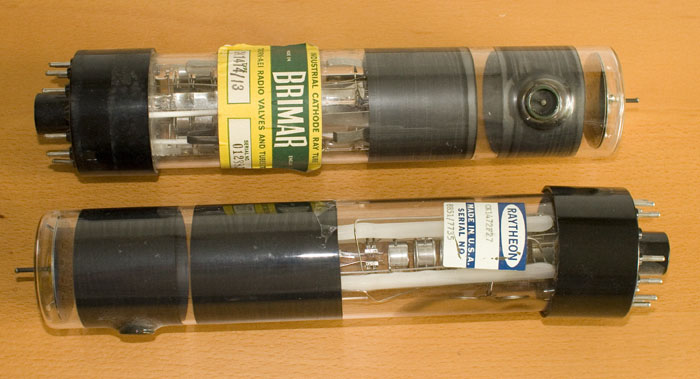Monoscope character generators
UvA Computer Museum catalogue nr 09.17

Monoscopes (40's and 50's) are a special kind of camera tube, designed to produce a video signal corresponding to one fixed, built-in image, for instance a standard (black-and-white) television test pattern. Hence they are a kind of read-only memory.
The image inscribed on the target plate of both of the monoscope tubes shown here is a set of characters. By aiming the electron beam (by means of fairly complex external electronics), any of these characters could be scanned separately, and the resulting signal inserted into a video stream directed to standard monitors, for instance for showing arrival times on an airport. Thus the character generating monoscope is a predecessor of the ROM-based character generator universally used in the later alphanumeric video terminals.
The Brimar and Raytheon tubes are probably functionally identical (maybe apart from having different character sets), though they look rather different inside. In the Raytheon tube one of the two pairs of electron beam deflection plates is clearly visible. The target plate connection is a single stud projecting through the top of the glass envelope. An explanation of the working of these tubes appears in the Raytheon CK1414 datasheet.
The overall length of both tubes is 27 cm.
The Brimar monoscope (CM #09.17) was donated by Johan Hilgers, through the mediation of Cor Moerman, Museum Jan Corver. The Raytheon tube is in a private collection.
